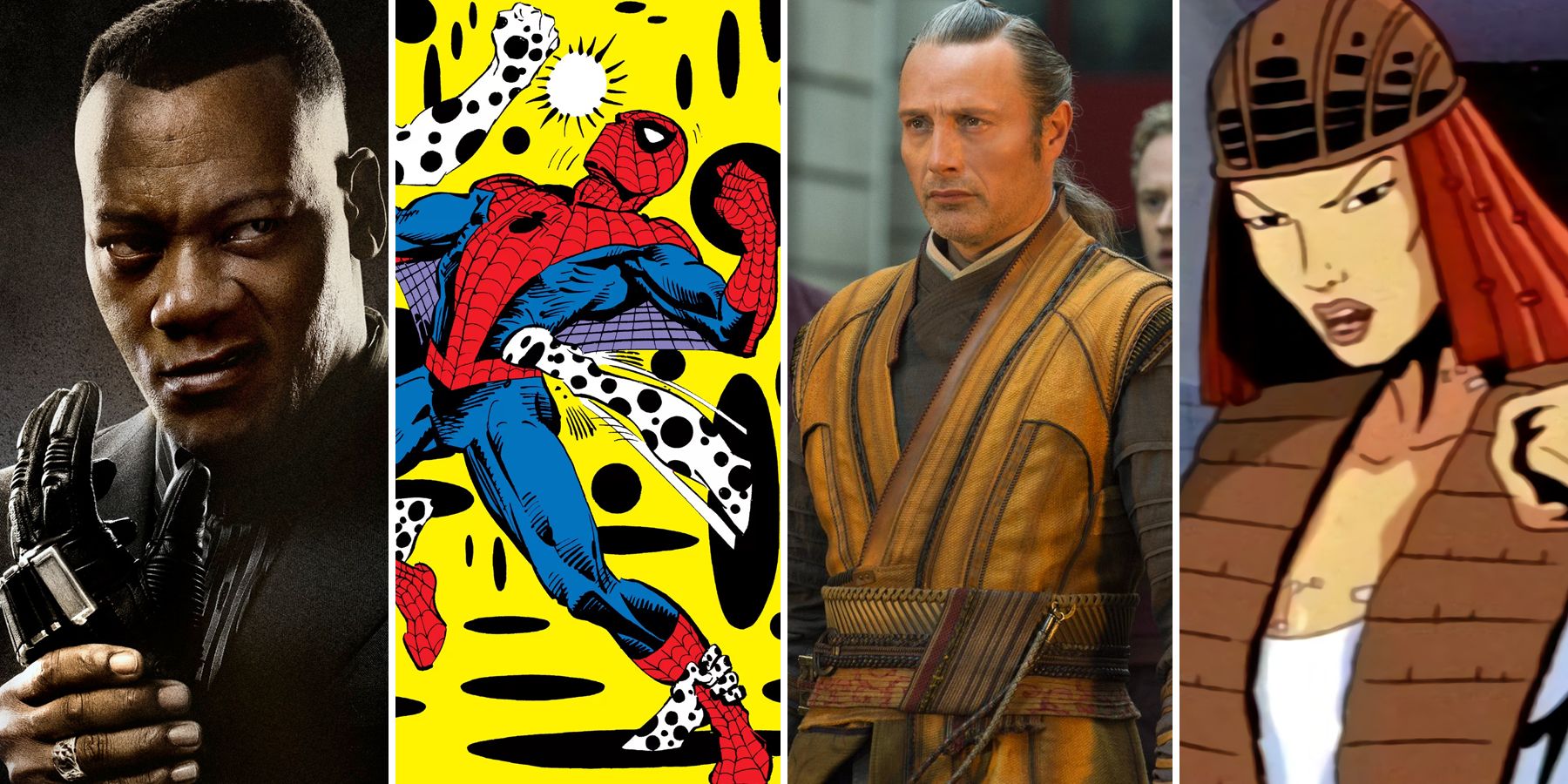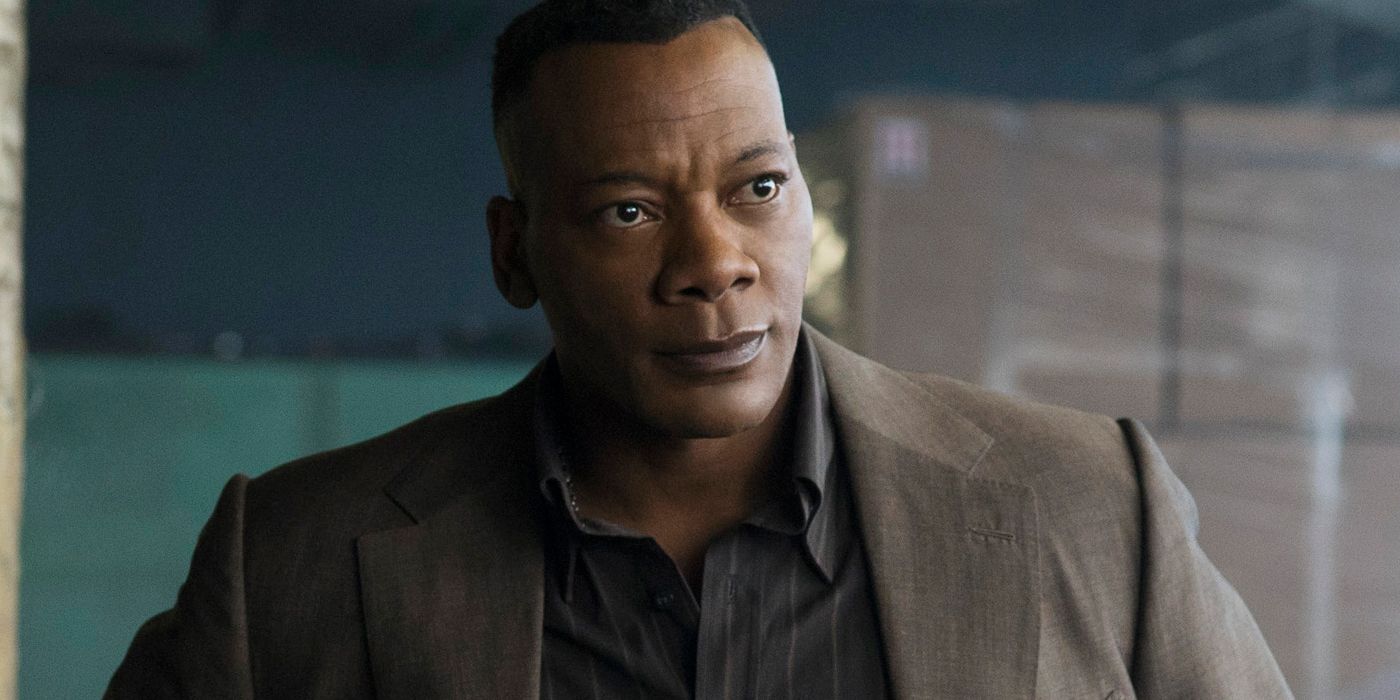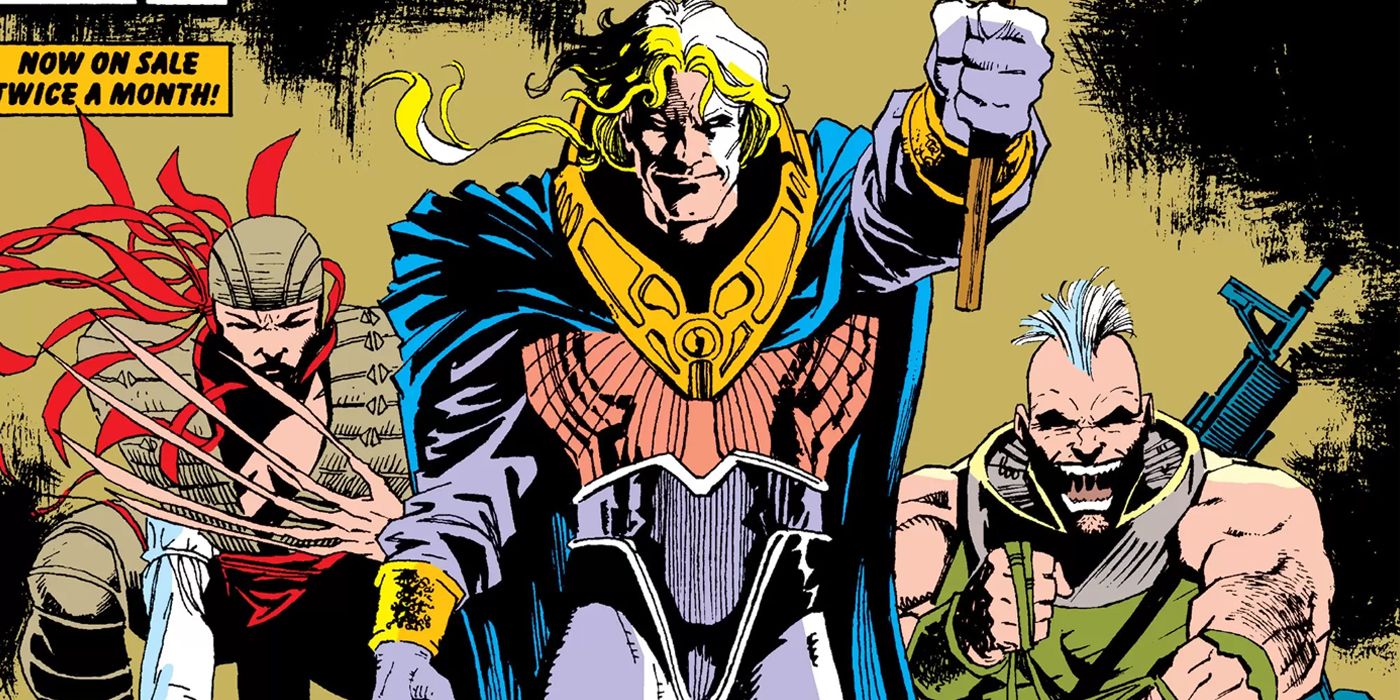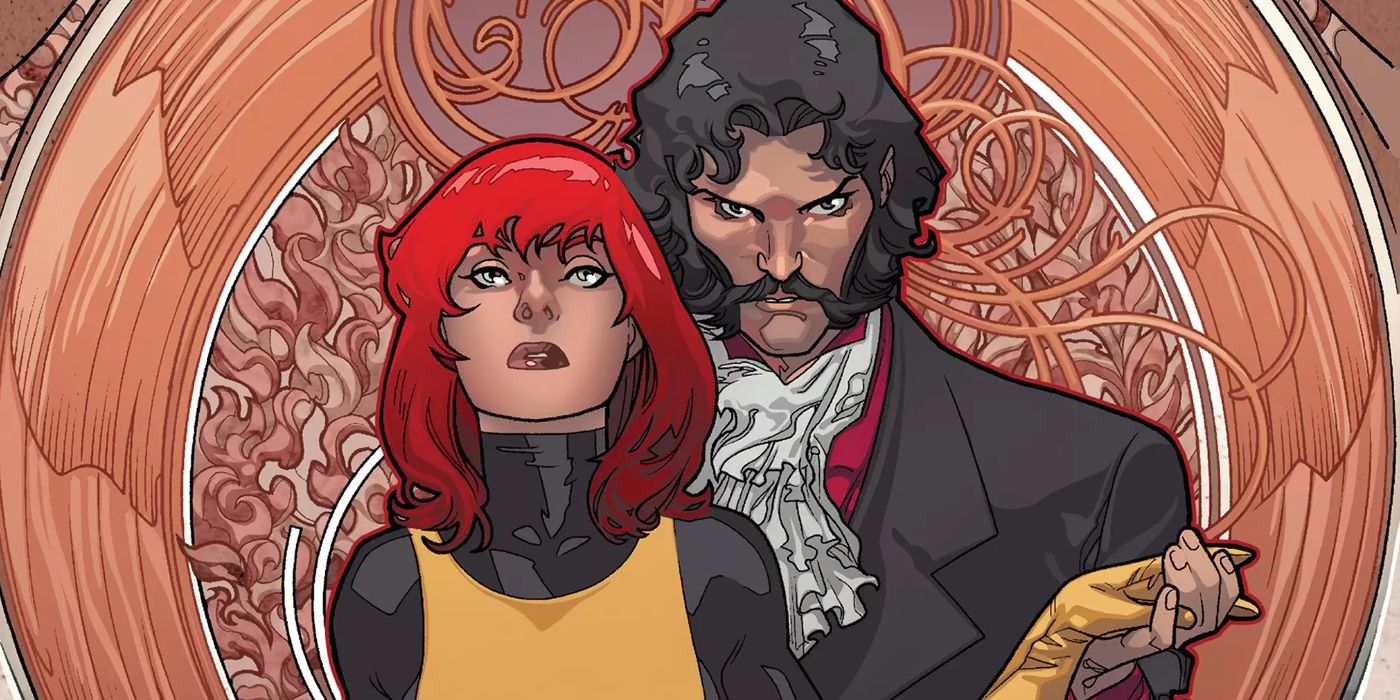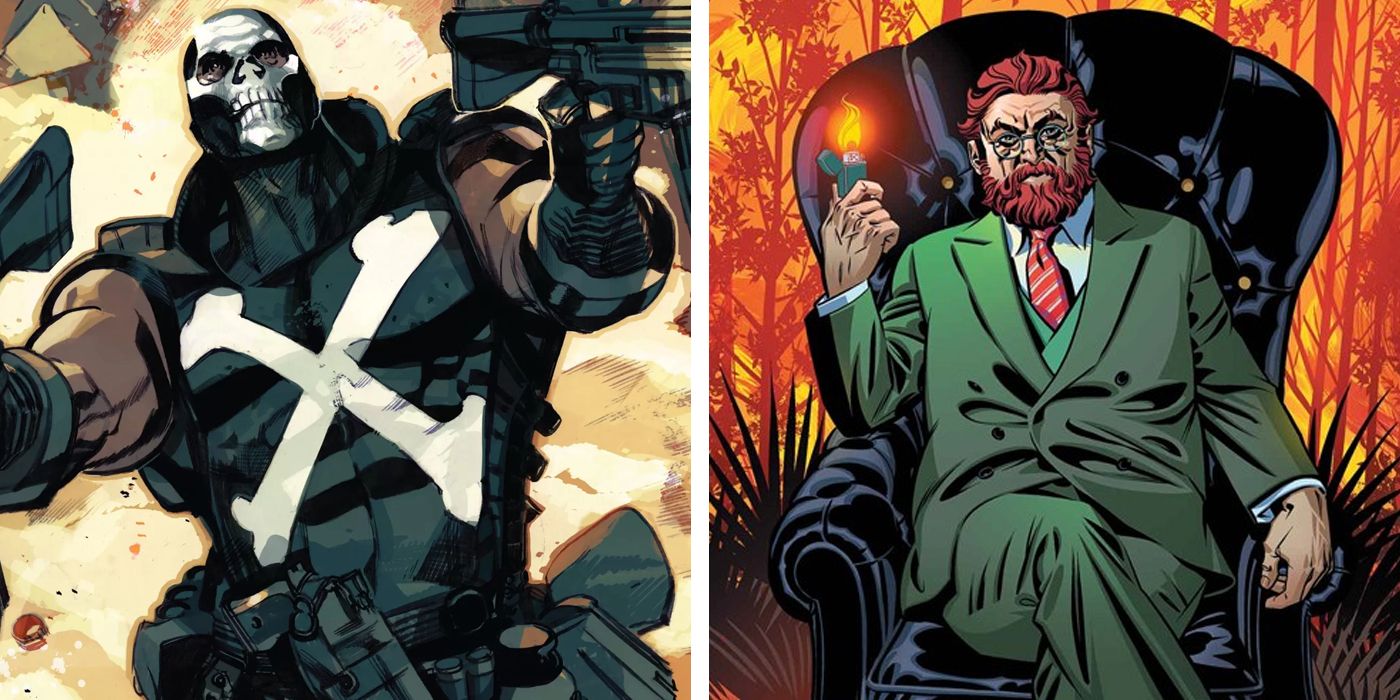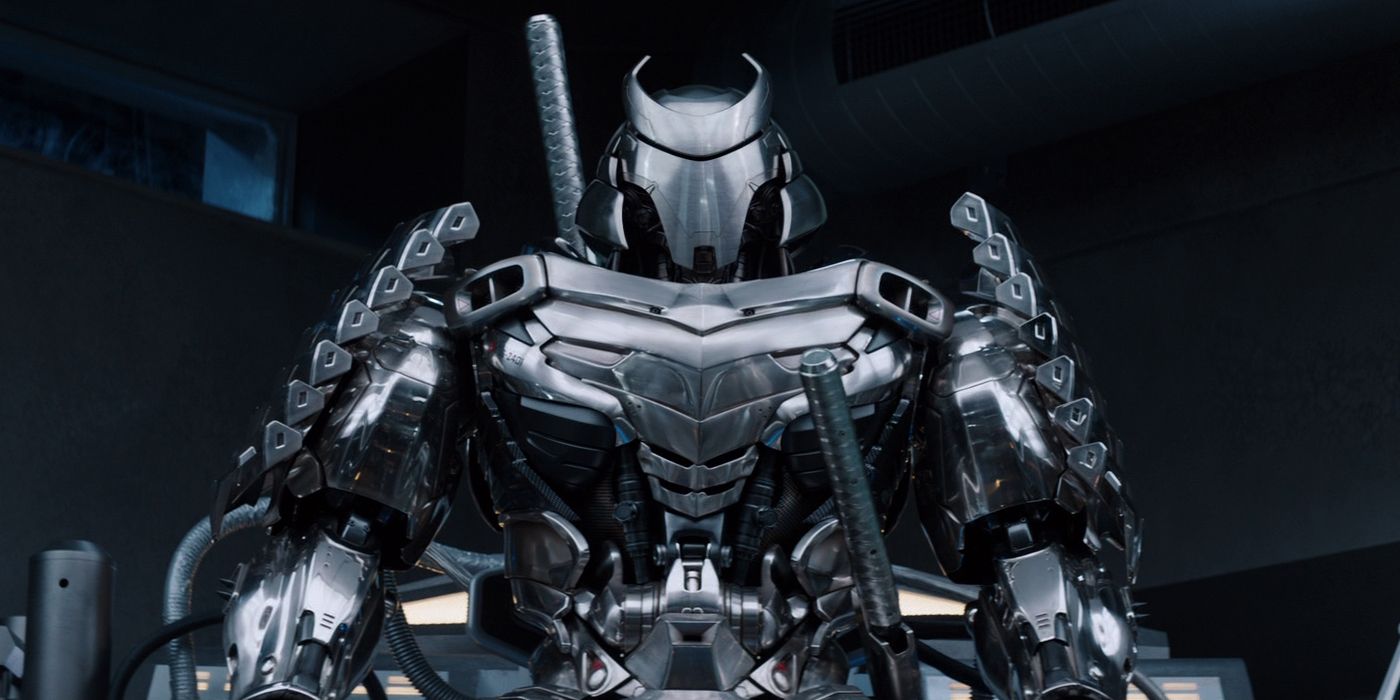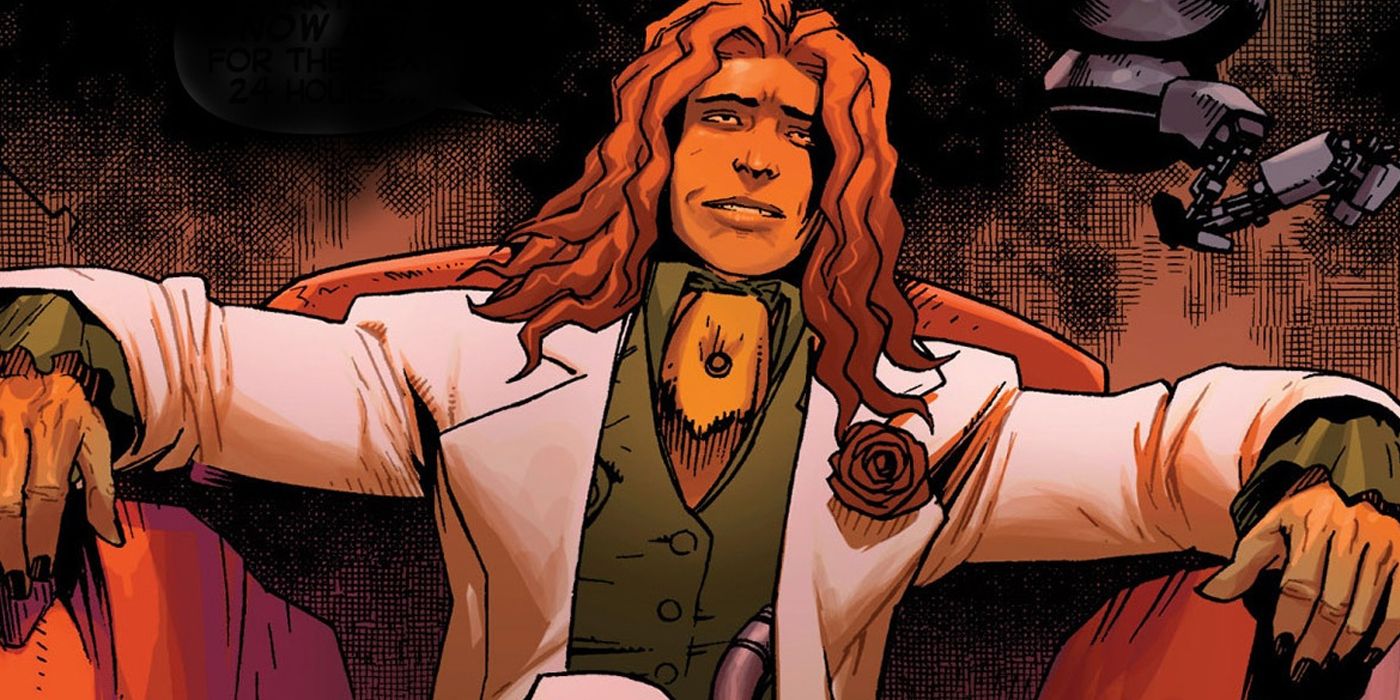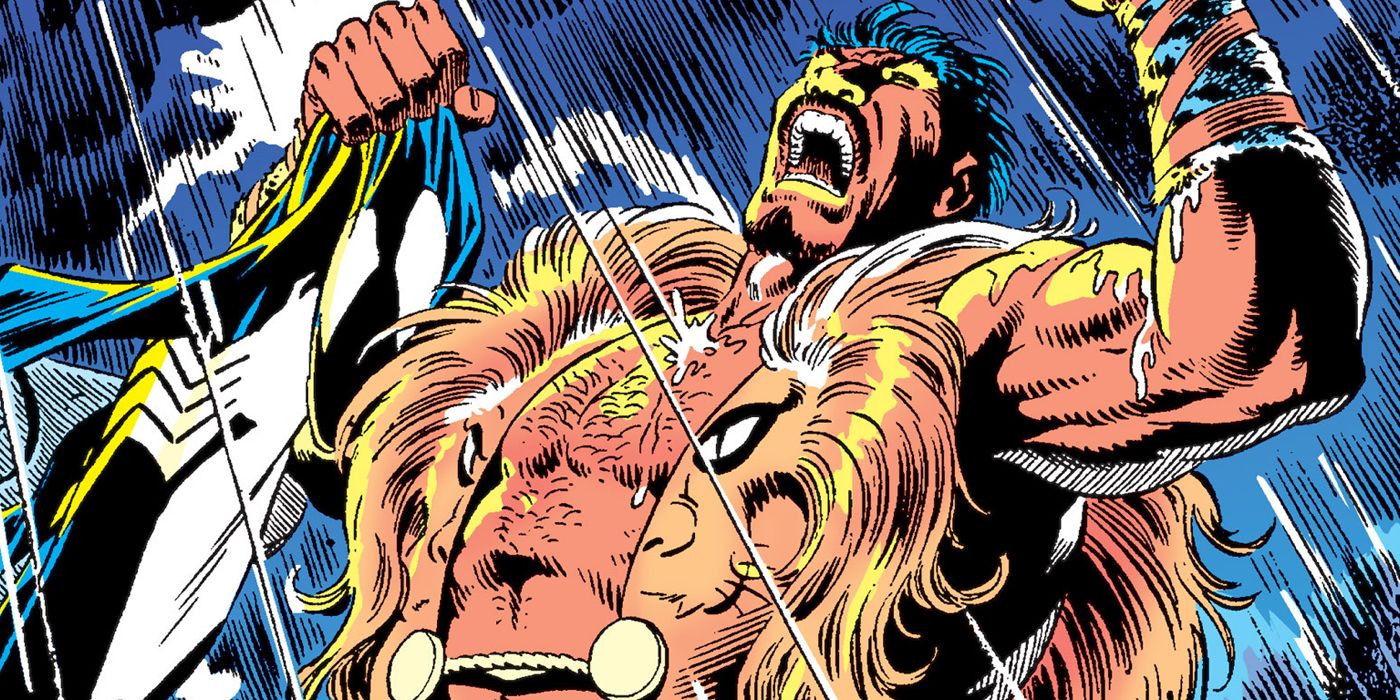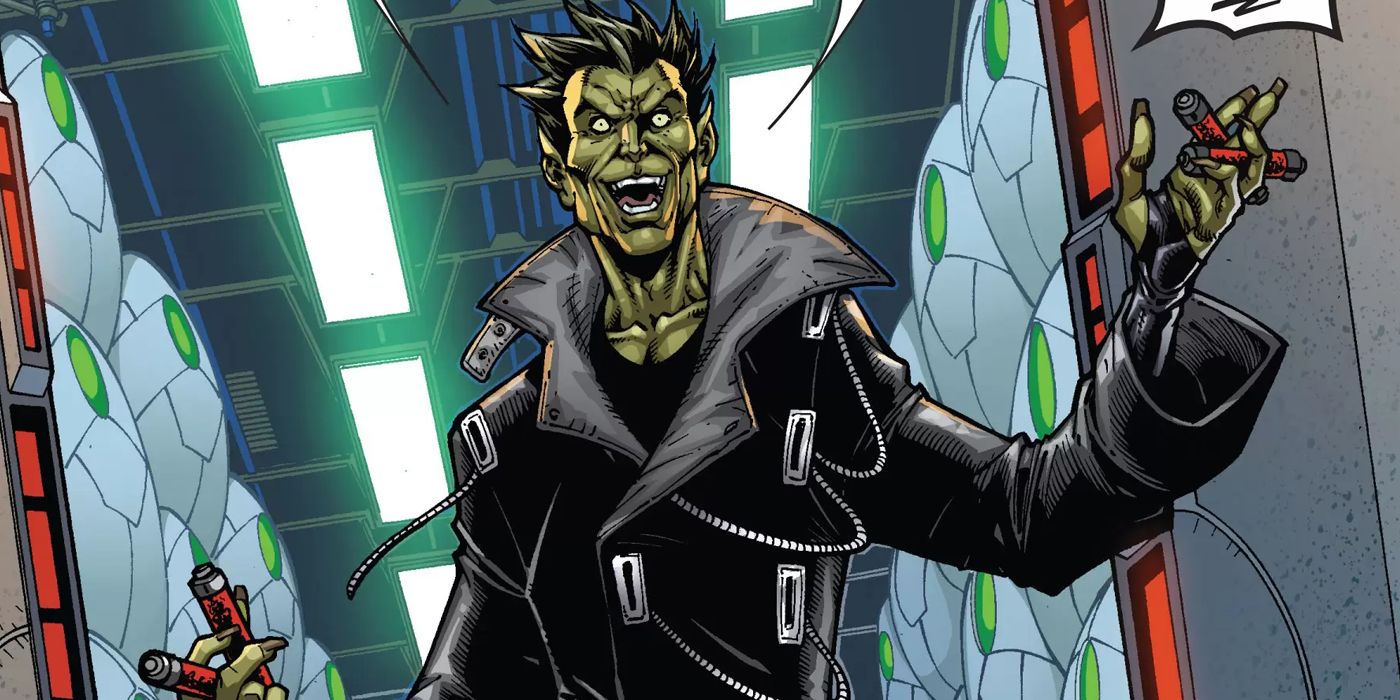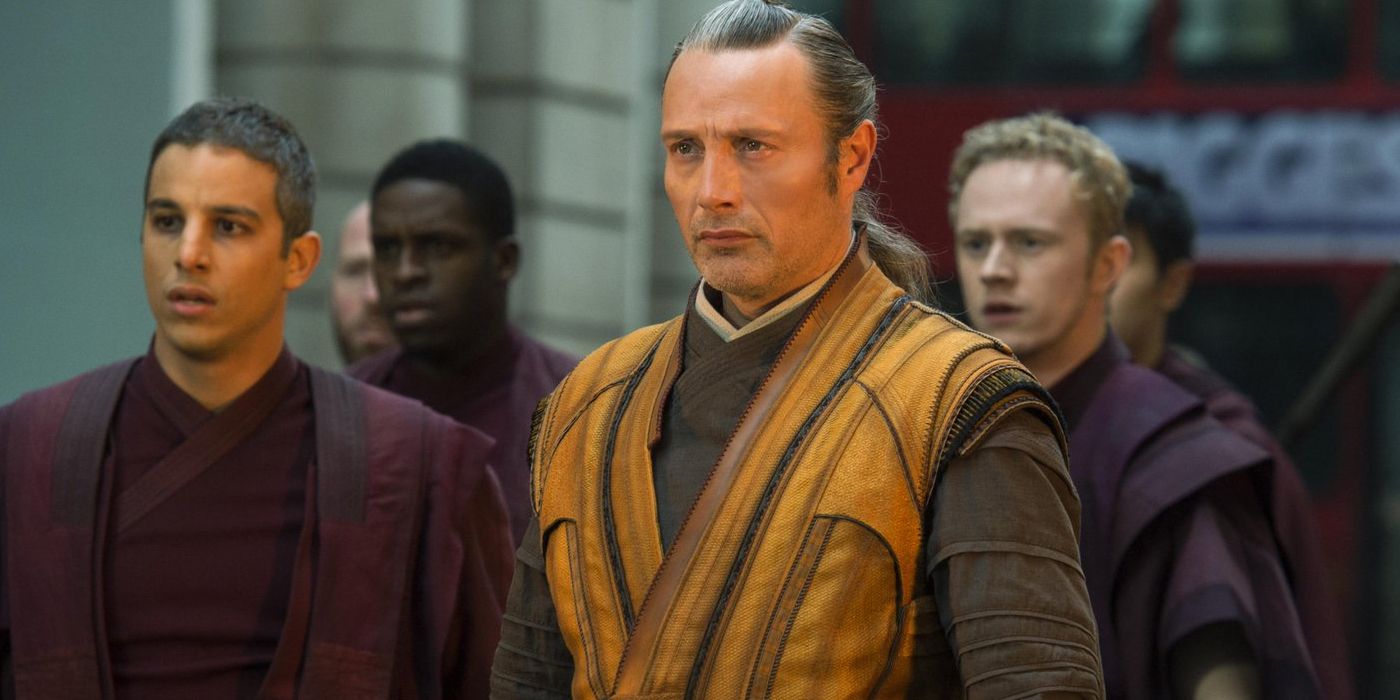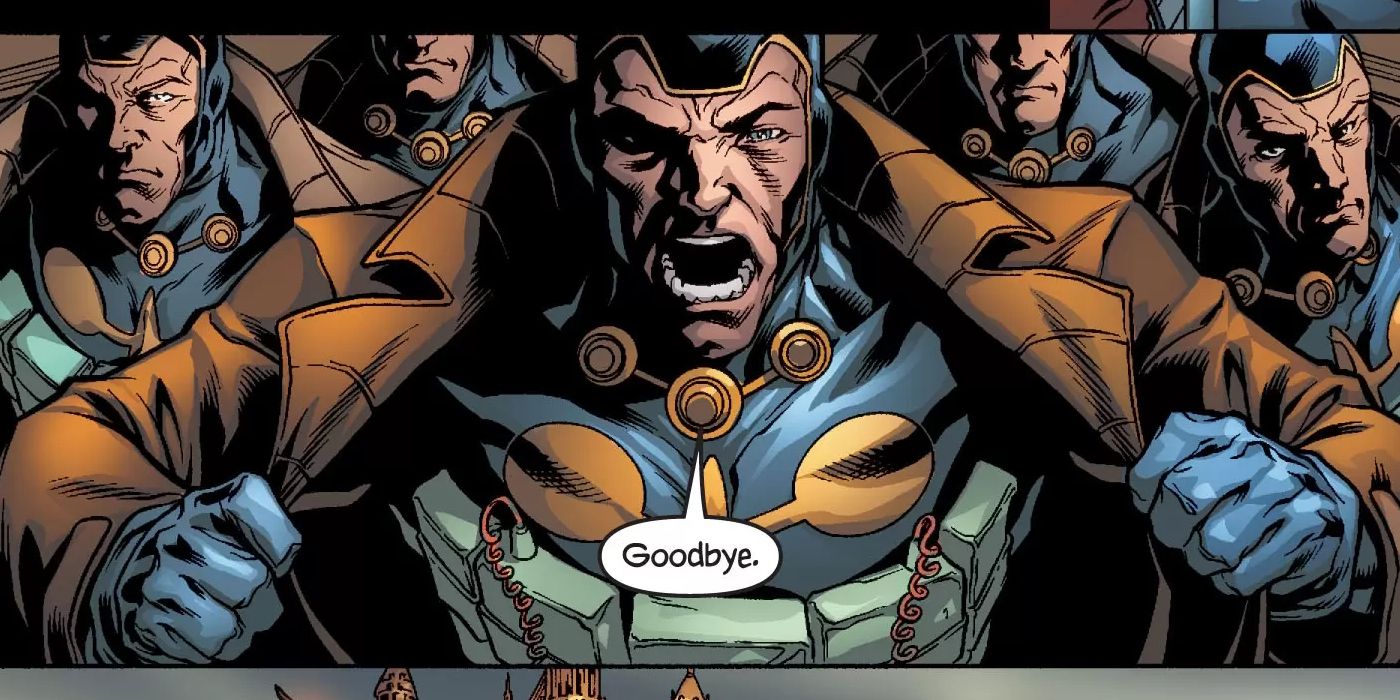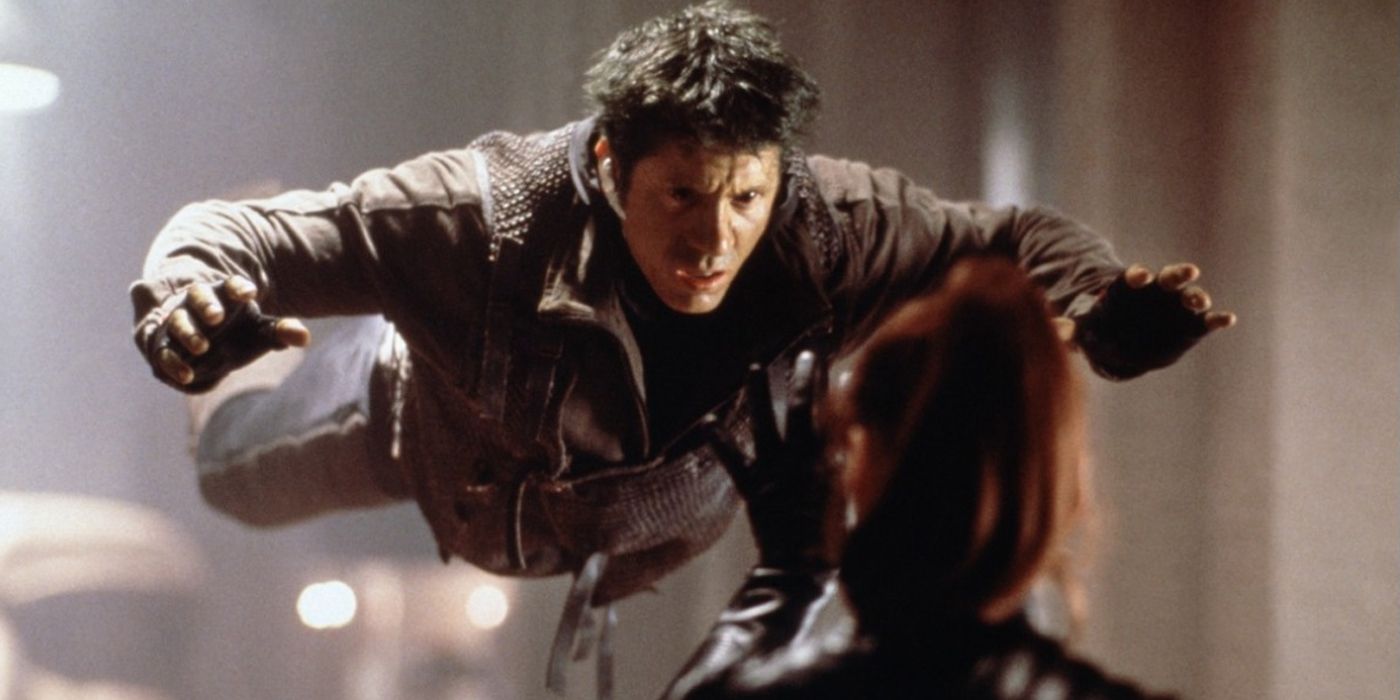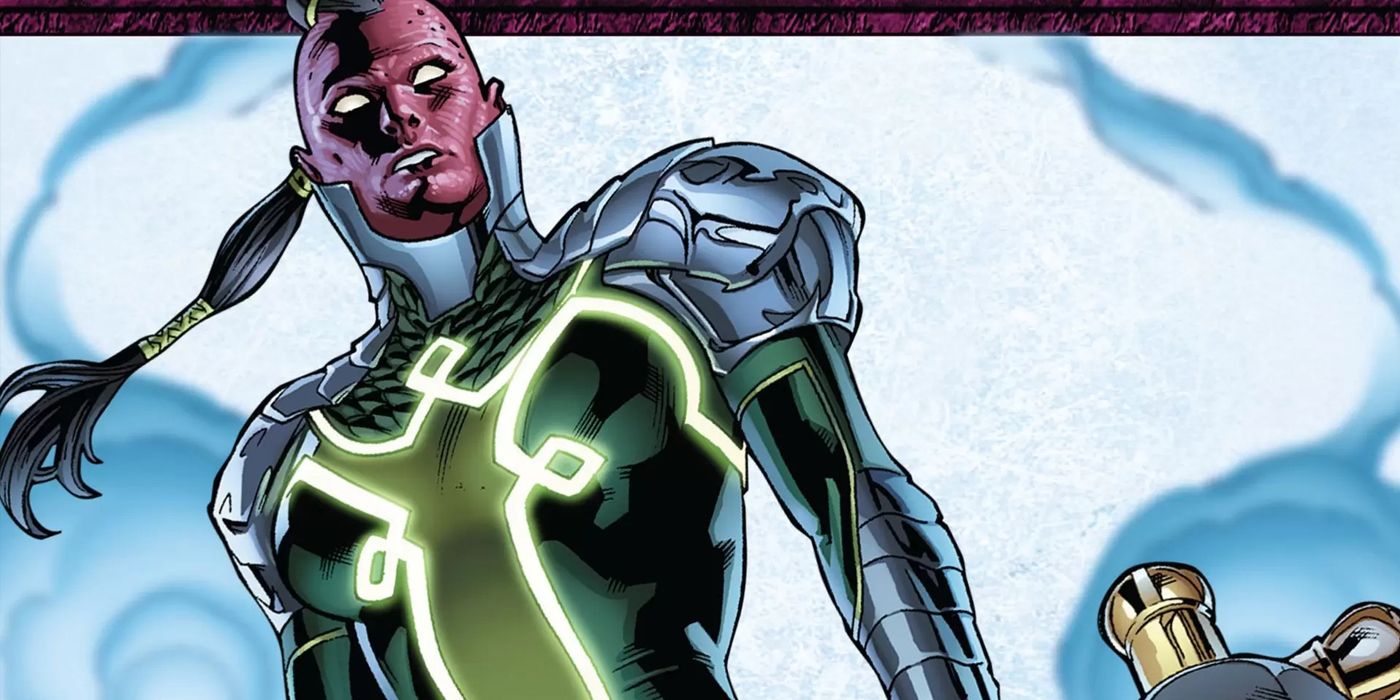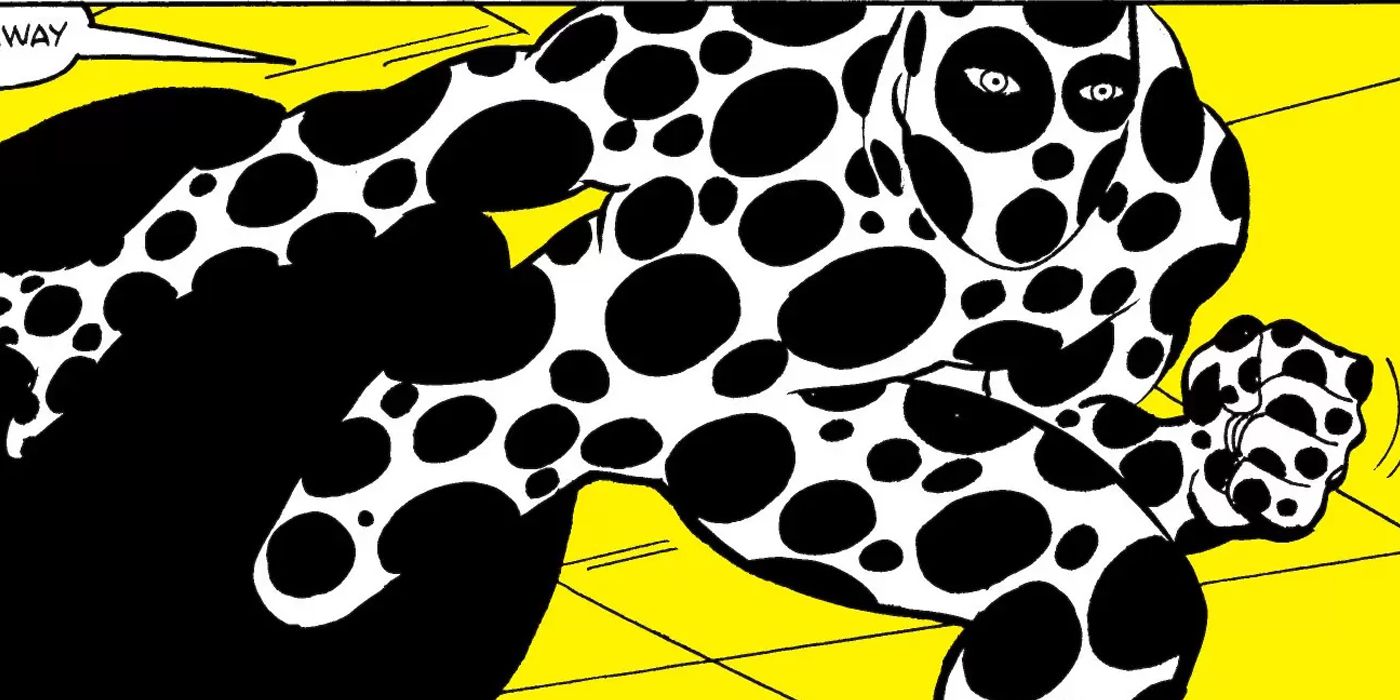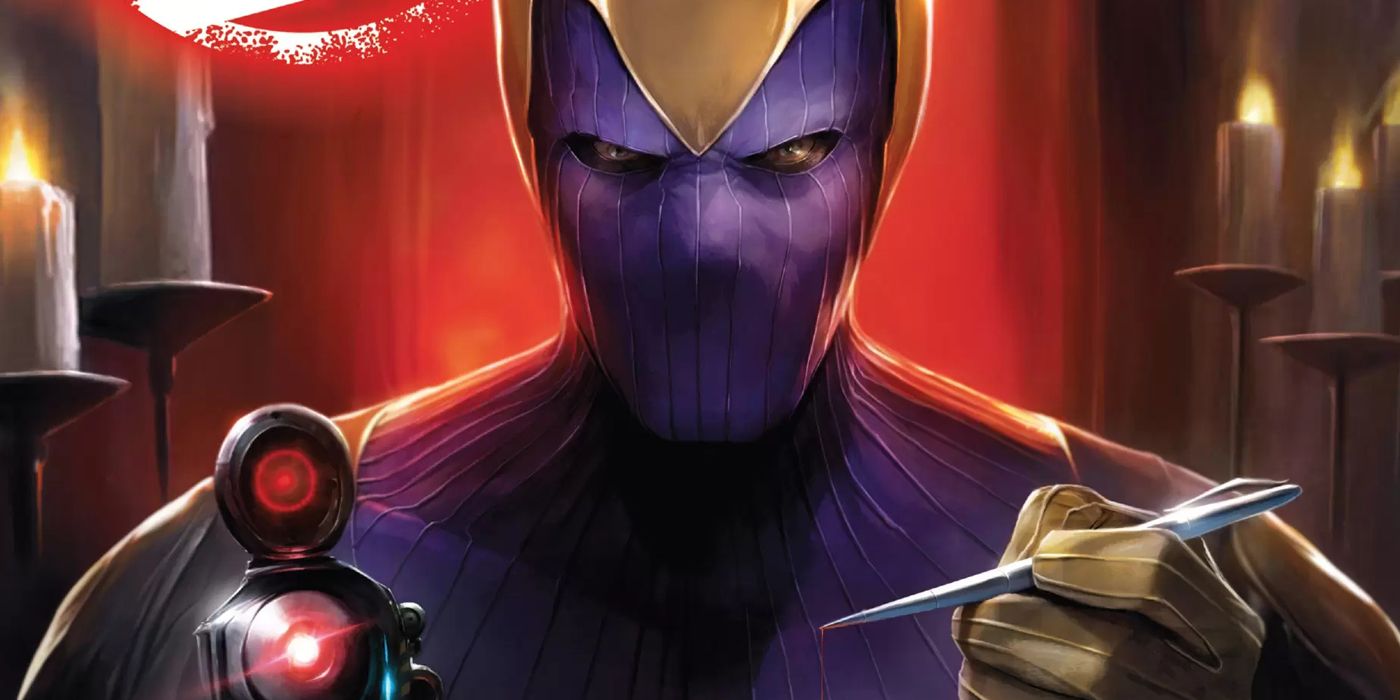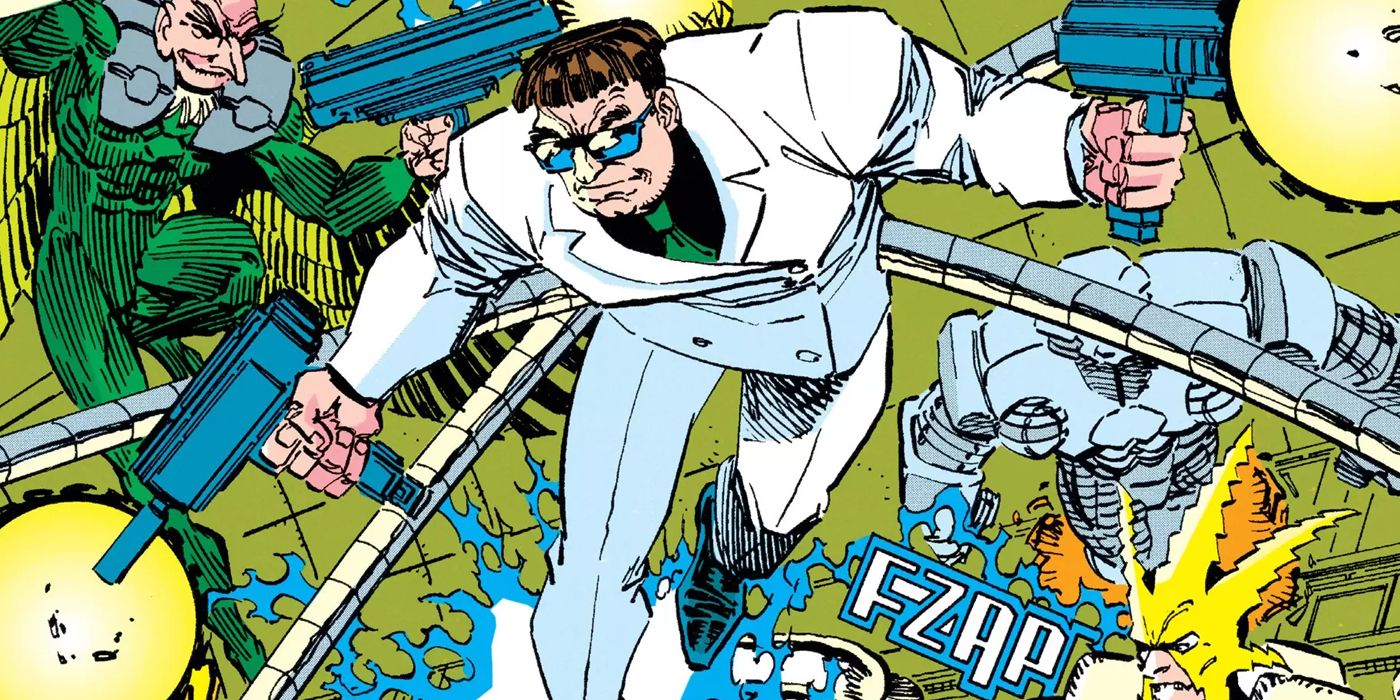With characters like Magneto and Doctor Doom, the Marvel Universe is home to morally complex supervillains who wield terrifying amounts of power. While those Marvel Comics villains have fueled the most beloved comics of all time, some of Marvel's other bad guys aren't quite so impressive. Next to Earth's mightiest Avengers and most uncanny mutants, these villains seem like total pushovers. Despite that, a handful of these supervillain underdogs have scored major upset victories against Marvel's biggest heroes. Even though these beatdowns have added a welcome degree of unpredictability to Marvel stories, these battles made Marvel's heroes seem a lot weaker than their fantastic adventures would have you believe.
RELATED: 16 Sadistic Killers Who NEVER Should Have Been In Kids Cartoons
Now, CBR is taking a look back at some underdog Marvel villains who beat the odds and destroyed some of Marvel's most famous heroes. In this list, we'll be counting down some of the biggest supervillain upset victories from comics and film. Even by the incredibly fluid standards of the superhero genre, the outcomes of these battles were barely believable. While this list is hardly comprehensive, we'll be looking at how these villains took their opponents down, why they should've lost and whether these villains are just lucky or secretly terrifying.
15 DIAMONDBACK
Even though he's not that powerful, Diamondback managed to become the arch-enemy of Luke cage, one of Marvel's toughest heroes. Willis Stryker debuted alongside his nemesis, Luke Cage, in 1972's Luke Cage, Hero for Hire #1, by Archie Goodwin and George Tuska. In the Marvel Universe, Stryker earned his codename thanks to his knife-throwing skills and reputation as a fierce self-taught martial artist.
In Netflix's Luke Cage, Erik LaRay Harvey's Diamondback didn't even have that going for him. As a black market arms dealer for Hammer Industries, Styker used a small arsenal of hi-tech weaponry to destroy Mike Colter's Luke Cage. Over the course of the series, Styker used the Judas bullet, which was infused with alien metal, to penetrate Cage's unbreakable skin with a few lucky shots. After Cage's troubled recovery, Stryker used a strength-enhancing exo-skeleton against Cage in a fight that the Defender should've won in moments.
14 THE REAVERS
The Reavers can't stop losing to the X-Men. In their first appearance, 1988's Uncanny X-Men #229, by Chris Claremont and Marc Silvestri, the cyborg mercenaries lost their Australian headquarters to the X-Men. After that, the cyborg Donald Pierce, a member of the Hellfire Club's influential Inner Circle, reformed the group and brought in new members including Lady Deathstrike. While their histories varied, all of the Reavers shared a grudge against Wolverine.
In 1989's Uncanny X-Men #251, by Claremont and Silvestri, the Reavers got their revenge. After finding Wolverine alone near their old base, the Reavers overwhelmed an unsuspecting Logan. They tortured Wolverine, strung him up on a giant "X" and let him to die in the harsh climate of the Australian Outback. Wolverine was rescued by the newest X-Man, Jubilee. He usually defeated Lady Deathstrike and the Reavers whenever they fought again after that incident.
13 MASTERMIND
Even in his early days as a founding member of the Brotherhood of Mutants, the illusion-casting Mastermind carved out a place as one of the X-Men's nastiest villains. After being introduced by Stan Lee and Jack Kirby in 1964's X-Men #4, Jason Wyngarde was invited to join the Inner Circle of the Hellfire Club. In order to secure his place with the influential mutant group, he planned to brainwash the X-Men's Jean Grey into becoming the new Black Queen of the Hellfire Club.
At that time, the Phoenix Force had taken the form of Jean Grey, and Mastermind's actions unwittingly unleashed the genocidal fury of the Dark Phoenix. In Chris Claremont and John Byrne's "The Dark Phoenix Saga," Mastermind was able to manipulate the ancient cosmic entity with his relatively simple illusions. Eventually, the Phoenix left Mastermind in a catatonic state after giving him a taste of her cosmic awareness.
12 CROSSBONES AND DOCTOR FAUSTUS
In Ed Brubaker and Steve Epting's Captain America #25, the apparent death of Captain America rocked the comic book world and made national news headlines. Of course, the Red Skull, Captain America's nemesis, orchestrated the attack, but two other lesser-known villains played integral roles in the assassination. The assassin Crossbones tried to snipe Captain America, but the efforts of Doctor Faustus were what really took out the Avenger.
Created by Mark Gruenwald and Kieron Dwyer in Captain America #360, Crossbones has mainly been the Red Skull's resident strongman and occasional sharpshooter. Doctor Faustus was created by Stan Lee and Jack Kirby in 1968's Captain America #107. Although he doesn't have superpowers, Faustus was able to hypnotize Sharon Carter into firing the shot that ultimately "killed" Captain America. Although the Captain had defeated both of those villains numerous times, their combined efforts were simply too much for him this time.
11 SILVER SAMURAI
In comics, the Silver Samurai had a lengthy history that saw him evolve from a villain into the leader of Big Hero 6. Created his debut in 1974's Daredevil #111, by Steve Gerber and Bob Brown, Kenuichio Harada mainly used his mutant force-field abilities to make his sword sharp enough to cut through anything but adamantium.
James Mangold's The Wolverine brought a very different Silver Samurai to the big screen in 2013. While Will Yun Lee portrayed a version of Harada, the Silver Samurai was a robotic suit of armor that was worn by Hiroyuki Sanada's Shingen Yashida. Although Yashida was just a man in a robot suit, he was able to cut off Logan's adamantium claws and absorb part of the X-Man's healing factor. Even though he fell off of a cliff moments later, the cinematic Silver Samurai is the kind of villain that Wolverine has usually defeated easily.
10 ARCADE
Even though he caused mischief all around the Marvel Universe, the X-Men villain Arcade was a joke for the first few decades of his existence. Created by Chris Claremont and John Byrne in 1978's Marvel Team-Up #66, Arcade is an assassin who kills his victims by sending them to the impressively-named Murderworld, an amusement park full of deathtraps.
Despite that, Arcade was never a serious threat until 2012's Avengers Arena. In that series by Dennis Hopeless and Kev Walker, the stars of Avengers Academy and other teenage heroes were forced to kill each other in Marvel's answer to The Hunger Games. After killing a number of powerful-but-inexperienced young heroes on Murderworld, Arcade released footage of the event online and went into hiding. Since Arena established Arcade as legitimate threat, he's forced mercenaries and adult heroes like Spider-Man and Elektra to endure Murderworld's deadly devices.
9 KRAVEN THE HUNTER
Although Kraven the Hunter is one of the more intimidating villains on this list, Spider-Man defeated Kraven by catching him in a giant web in 1964's Amazing Spider-Man #15. Although that Stan Lee and Steve Ditko tale gave Kraven an inauspicious start, he still became one of Spider-Man's better villains over the next few decades. Then, J.M. DeMatteis and Mike Zeck changed Kraven forever with "Kraven's Last Hunt."
In that 1987 tale, an aging Kraven decided to hunt Spider-Man one last time in one of the wall-crawler's darkest adventures. After capturing Spider-Man, Kraven put him in a chemically-induced coma and buried him alive for weeks. In that time, Kraven posed as Spider-Man in an attempt to prove his ultimate superiority. By its surprising finale, the story had added a psychological complexity to the villain that made him one of Spider-Man's most intriguing foes.
8 THE JACKAL
On paper, the Jackal doesn't really seem like anything special. When Gerry Conway and Ross Andru turned Peter Parker's professor, Dr. Miles Warren, into a villain with 1974's Amazing Spider-Man #129, he was a minor supporting character. Even after he cloned Spider-Man and his late girlfriend Gwen Stacy, the Jackal still seemed like one of Marvel's garden-variety mad scientists.
Years later, the Jackal returned to totally dismantle Peter Parker's life in "The Clone Saga." In that infamous 1990s' mega-crossover, the reappearance of the Jackal's first Spider-Man clone, now called Ben Reilly, caused years of doubt and confusion for Spider-Man and his readers. Although the Jackal wasn't the story's ultimate mastermind, his cloning technology did more cumulative damage to Spider-Man that most villains could ever hope. In 2011, the Jackal returned and, briefly, gave Spider-Man's powers to most of Manhattan during the "Spider-Verse" crossover.
7 KAECILIUS
Before he was featured in Scott Derrickson's Doctor Strange, Kaecilius was a footnote in Marvel's mystical history. After Stan Lee and Steve Ditko created him in 1965's Strange Tales #130, Kaecilius went on to make less than a dozen appearances. Even though he was little more than Baron Mordo's assistant, the mystical villain became a major force in the Marvel Cinematic Universe.
In Doctor Strange, Mads Mikkelsen's Kaecilius killed the Ancient One, Earth's Sorcerer Supreme. As a master of the mystic arts, Tilda Swinton's Ancient One was far more skilled than her former disciple. Despite that, he was able to gut her with a lucky blow while she was distracted. Although he was ultimately destroyed by his arrogant use of dark magic, Kaecilius proved to be an equally-challenging opponent for Doctor Strange and his allies in the film's climactic battle.
6 ULTIMATE MULTIPLE MAN
While Jamie Madrox, the Multiple Man, might be the hero of his own feature film soon, the self-duplicating mutant hasn't always been so heroic. Although he debuted as an antagonist in 1975's Giant-Size Fantastic Four #4, by Len Wein, Chris Claremont and John Buscema, he quickly became a close ally and associate of the X-Men. In the Ultimate Universe, Madrox fell under the spell of the hypnotic Lorelai and became a faithful follower of Magneto.
When Magneto tore the Ultimate Universe apart in the much-maligned 2009 crossover Ultimatum, Madrox's duplicates played a key part in his plans. The Master of Magnetism sent Madrox's duplicates out to detonate suicide bombs all around the world. These attacks resulted in the destruction of Parliament and the Academy of Tomorrow, a school for young mutants. Although Wolverine eventually killed Madrox, his duplicates killed powerful heroes like Hank Pym, Emma Frost, Sunspot, Cannonball and Polaris.
5 TOAD
Although Toad is one of the X-Men's oldest foes, he's never been terribly impressive. Created by Stan Lee and Jack Kirby in 1964's X-Men #4, Mortimer Toynbee was originally the weakest link in Magneto's original Brotherhood of Evil Mutants. Despite his superhuman agility and reflexes, he drifted aimlessly through the Marvel Universe until he formed a new incarnation of the Brotherhood of Evil Mutants in the 1990s.
In Bryan Singer's X-Men, Ray Park portrayed a refined version of Toad in that 2000 film. In sharp contrast the original Toad, Park's more comedic character had a prehensile tongue and could spit out a quick-hardening slime in addition to his athletic abilities. The combination of these abilities was somehow enough to take Famke Janssen's Jean Grey out of the fight until Cyclops could rescue her. Since this Toad was moderately threatening, the original Toad counterpart was made over in his image.
4 SIN
As the daughter of the Red Skull, Sin has proven unfortunately adept at the family business. After she was introduced by J.M. DeMatteis and Paul Neary in 1984's Captain America #290, an adolescent Sinthea Schmidt was put in a machine that aged her into adulthood and gave her telepathic powers. While she was de-aged back into young adulthood and lost those powers, Sin was still a moderate threat to Captain America and his allies.
Sin took center stage in the 2011 crossover Fear Itself, when she freed the Serpent, a Norse God of Fear, on an unsuspecting Marvel Universe. Wielding the Hammer of Skadi, Sin led an army of the Red Skull's forces on Washington D.C. Thanks to her temporary Norse powers, she was able to mortally wound the Winter Soldier. Even though he got better, that's still a major accomplishment for a relatively minor villain.
3 THE SPOT
Since he basically looks like a human Dalmatian, the Spot doesn't exactly cast an imposing figure. Still, he's proven himself to be a surprisingly effective villain with his teleportation portals. Created by Al Milgrom and Herb Trimpe in 1985's Peter Parker, The Spectacular Spider-Man #98, Dr. Johnny Ohnn was working for the Kingpin when he discovered a way to access and travel through another dimension.
Although the sight of the polka-dotted villain initially made Spider-Man fall down with laughter, the Spot legitimately defeated the web-slinger and the Black Cat in their first encounter. After he lost a rematch with Spider-Man, the Spot joined Spider-Man's D-list villains and even joined a team called the Legion of Losers. Despite that, the Spot appeared as a serious villain on Spider-Man: The Animated Series in the 1990s. Although he only appeared once, his portal technology played a pivotal role in the series' final episodes.
2 BARON ZEMO
Since the original Baron Zemo killed Bucky and made Captain America freeze in the icy Atlantic, his son Helmut had quite a reputation to live up to as the next Baron Zemo. Created by Tony Isabella and Sal Buscema in 1973's Captain America #168, this Zemo became a regular thorn in Captain America's side. Zemo also led the Masters of Evil, a group of villains who went on to pose as the heroic Thunderbolts.
During his time with the Thunderbolts, Zemo became more of an antihero. In 2006's Thunderbolts #100, by Fabian Nicieza and Tom Grummett, Zemo saved the world by killing Genis-Vell, one of Marvel's Captain Marvels. As Genis began to lose control over his cosmic energy-absorption powers, Zemo killed him by trapping him in another dimension. Even though he saved the universe from an existential threat, Zemo went back to beating up Captain America within a few years.
1 DOCTOR OCTOPUS
Doctor Octopus isn't a bad villain. Thanks to his tentacles and evil scientific genius, Otto Octavius has been one of Spider-Man's most iconic foes since his 1964 debut in Amazing Spider-Man #3, by Stan Lee and Steve Ditko. Even though he stole Peter Parker's life in Superior Spider-Man, Octavius is the kind of villain who shouldn't last a second against a major physical threat like the Hulk.
Despite that, Doctor Octopus destroyed the Hulk in 1992's Spider-Man #28, by Erik Larsen. With a new set of adamantium tentacles, Octavius was reforming the Sinister Six when the Hulk crashed into his secret hideout. Even though the other villains fell after a few, Doctor Octopus persevered and knocked the Hulk out of the building with his upgraded tentacles. Although the Hulk later claimed that he was "holding back," this incident serves as a warning about underestimating Spider-Man's lethal foe.
Stay tuned to CBR for all the latest in comic book and pop culture news! Let us know who your favorite underdog supervillain is in the comments!

